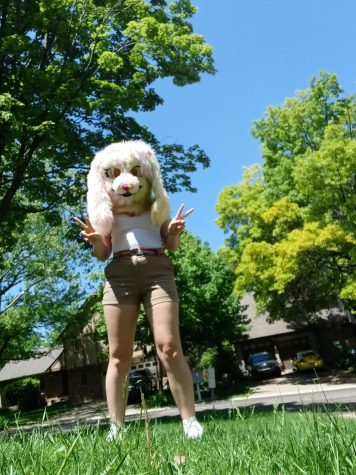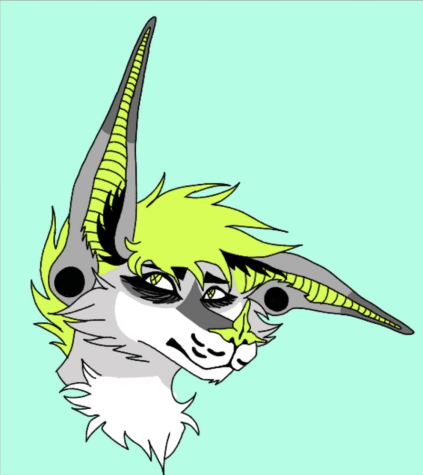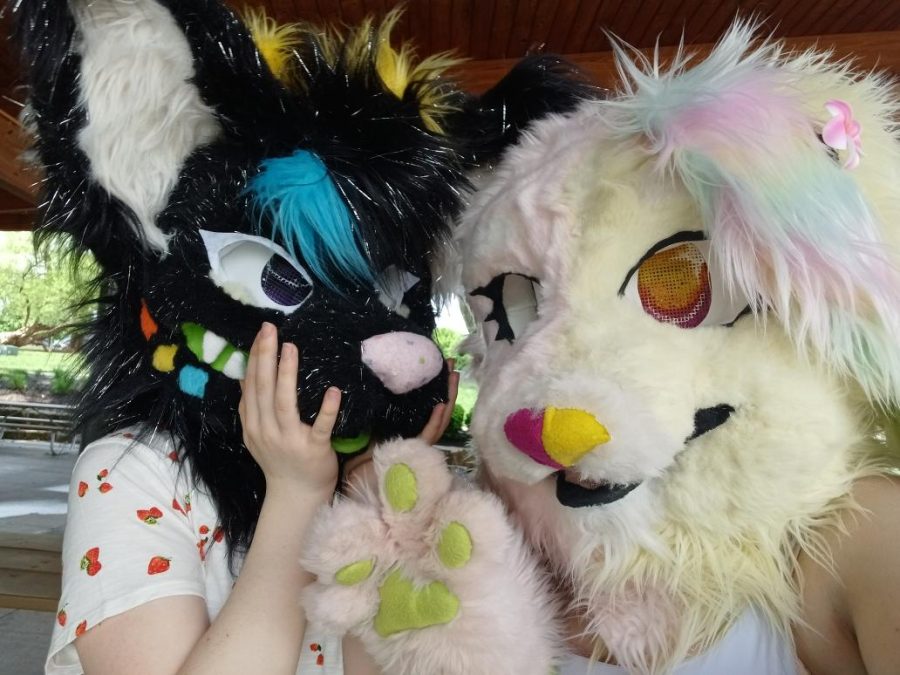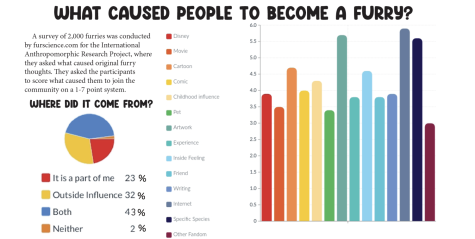Furry Fandom
November 29, 2022
What prompts someone to wake up in the morning and wear wolflike ears and tails? To some, this is a strange phenomenon, but to others, it is a way of life.
A furry is defined as an enthusiast for animal characters with human characteristics, meaning that the person tends to resonate with anthropomorphic animals with a human build.
Furry culture came into the light not very long ago, the term tracing back to the early 1980s. While it is impossible to completely tell when humans began starting to mentally identify as animals, it is clear that there was a strong increase in the 90s. Some attribute this uptick to the Disney corporation for making lovable anthropomorphic animal characters.
However, there remains a debate about whether or not furries are truly connected to animal counterparts or if they are simply just like us. The answer falls in somewhat of a gray area. A survey conducted by furscience.com for the international Anthropomorphic Research Project, or IARP, found that only 23% of furries felt as if they have always had an animal identity inside of them, and about 32% testified that they joined the fandom for separate reasons then wanting to physically be an animal.
Cassidy Price fits into the 32% category because she is mainly into the fandom to simply have fun. 
“It’s more of a hobby. Basically, it’s just like cosplaying as your own character that is an animal. It’s anthropomorphic animals, but you are cosplaying as it. It is not like any weird stuff,” Price said.
Price likes to connect to her fursonas by creating art and building cosplays of her characters Spoopy and Axis.
“I have 2 of them actually, one’s name is Axis and the other’s name is Spoopy, which is a dog[…] I like to draw them in my free time, I doodle them on my papers. I have 1 suit already made, I do not have Spoopy but I have Axis. He is a protogen,” Price said.
Fursona and their furry suits can come in all different species and range from realistic to fantasy monsters like dragons. A protogen is what you call an anthropomorphic cyborg creature and they are very common in the fandom today.
It is no secret that furries have grown in popularity over the years.
There are many ways to get involved in the community, one way many furries connect to their animal identities is by fursuiting. Fursuiting is a term used by many in the community and it means exactly what it sounds like, it is the act of wearing a fursuit. Fursuiting is the preferred way for the majority of furries to express themselves.
Being the primary way that people connect with their anthropomorphic animal identities, they are super expensive to buy. The materials and labor costs range anywhere from $300- 30,000. These prices are far too high for many people, so they get crafty. Sophomore Pixie Dickinson is an active member of the furry community by taking on the job of making the fursuit.
“The way I make it like the head is sculpted out of foam. And then you use faux fur to make the rest of it which I normally get on Amazon. It’s mainly just foam, fur, and mesh for the eyes. It’s nothing special. Some people will go above and beyond and put speakers in their suits or like fancy fans, it gets really hot in the suites,” Dickinson said. 
Fursuits are usually very bright and colorful, mainly consisting of a large headpiece, fluffy mittens or gloves, and of course a tail.
“There’s a lot of fun, bright colors. It’s kind of appealing to people who have a hard time expressing themselves around people and don’t like having their faces seen, or people knowing who they are. It’s kind of like a mask that you get to wear and be yourself to be fun and happy,” Dickinson said.
Not all Furries are all forthcoming about their identity, while others are very open about it. Junior Reese Kelley has been part of the culture for many years now after accidentally stumbling into a convention.
“My mother is from France. I was visiting some of her family there. It turns out, there was a convention [going on] there. That’s kind of what got me into it. Me being young and stupid, I didn’t know what it was. I was just like, ‘ooh, funny animal’ It was a very interesting experience. Everyone’s going in and out of the [convention] room and the hotel, and you kind of get used to it. Then it all just kind of went from there,” Kelley said.
While Kelley is very confident in being a furry, they remain pretty quiet about their experience as a furry,
“I don’t really tell anyone. It’s not [because it’s] bad. I am not scared. It just doesn’t come up in conversation. I imagine most of them would be semi-okay with it,” Kelley said.
Furries are commonly looped in with heinous crimes, to the point where all furries appear to be disgusting sick people, but this is simply not true according to most of the fandom.
“I’ve heard there have been rumors of furries doing it in suits and like a lot of bad stuff. That’s usually what surfaces the most, there’s more news about it,” Price says.
The stigmas and misconceptions floating around the fandom are very hurtful towards the members. While it has not scared them into hiding, they do find it hard to outshine the negative views with their positive experiences.
“What you hear about, It’s all just misconceptions. It appeals to people who have trouble expressing themselves or want to be crafty. Some people just make the suits because they enjoy making them. It’s very appealing to people who want to have fun and hang out with people. The soft furs and bright colors are comforting for some people. And it’s honestly just about having fun,” Dickinson said.




